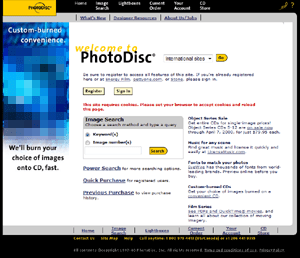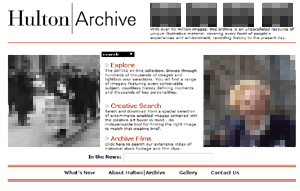Think of a photo for your project or presentation, and you have it instantly via Getty Images. That’s how unique and impressive the services offered by Getty Images. As a globally-known online stock photos and editorial images company that caters to various needs of the public, Getty Images has the most exclusive visual materials from multiple contributors and creators.
It has more than 415 million assets, including video, images, multimedia, music, and various digital content. Simply visit www.gettyimages.com, and you will have everything you need at the touch of your screen or mouse.
Interestingly, Getty Images collaborates with more than 340,000 content creators and contributors and strategic partners to provide visual materials for different companies and media outfits that appeal to their audience.
Over 160,000 news, entertainment, and sports events annually are using the creative and impactful visual content of Getty Images.
Commercial and communication departments are utilizing content from Getty Images to provide in-depth perspectives and concepts of their products or services.
The images distributed by Getty Images also made it to what we called historic photographs and digital archives.
“With our advanced search and image recognition technology, Getty Images serves customers in almost every country in the world bringing the world’s best content to media outlets, advertising agencies and corporations, and direct to consumers as well,” Getty Images company said in a statement.
“The breadth and quality of our content allows our customers and partners to tell their stories with greater creativity and accuracy, eliciting more emotion and enabling more action—whether the goal is commercial or philanthropic, revenue-generating or society-changing, market-disrupting or headline-driving,” it added.
A brief history of Getty Images
Mark Getty and Jonathan Klein established Getty Images in 1995. Getty Images radically changed the stock photo industry as a globally known and trusted brand. To say that Getty Images disrupted and turned the analog stock photography industry into a multi-billion business is an understatement.
Getty Images became the first company to have its stock photos be under license through the world wide web or internet.
Through this breakthrough development, Getty Images turned the stock photo into a giant online business. As it transferred its portfolio and content online, Getty Images became the leading company that innovated digital media and content distribution.
The iStock by Getty Images, which provides value to its visual content, also became a global source of material for small or medium-sized enterprises, and even individuals, who need impactful and powerful visual material for their products or services to stand out among their competitors.
Getty Images announced that iStock offers more than 125 million premium-quality stock photographs, vectors, videos, illustrations, and other visual material. The content is available online and is affordable.
“Combining iStock’s exclusive global contributor community with Getty Images’ extensive resources and creative trends expertise, iStock further delivers the company’s renowned quality, curating distinct and authentic creative stock content only available at www.istock.com,” the company announced.
The principal subsidiaries of Getty Images include Carlton Communications BV, Allsport Photographic plc, and PhotoDisc, Inc. On the other hand, its principal competitors are United News & Media, Eastman Kodak Company, and Corbis Corporation.
“Our imagery is used in the broad spectrum of applications. There is a good chance that the next time you see a television commercial, read an annual report, glance at a poster, visit a website, or choose a greetings card, the image that catches your eye will have been supplied by us,” Getty Images company said.
“Getty Images thrives in this dynamic and fast-moving industry because we are obsessed with providing the highest quality imagery capable of multiple sales; our customer service; our strong brand names; and our worldwide distribution network. We will capitalize on these key strengths to grow our existing business and to acquire complementary businesses in the future,” it added.
In March 1999, Getty Images announced it was moving its headquarters from the United Kingdom to the United States. They decided it since most of the company’s income was collected from America.
Getty Images picked Seattle as its new central office for the global distribution of its visual content via electronic commerce.
“Because of the importance of technology, which is completely transforming our industry,” Klein said in a report from the Puget Sound Business Journal in May 1999.
“We wanted to be close to that expertise,” he added.
In September 1999, Getty Images company disclosed to the public that they were acquiring the Image Bank from Eastman Kodak Co. for $183 million. The Image Bank has vast archival photography and film footage from over 1,500 photographers and 200 cinematographers.
With over 60 million still photographs and more than 30,000 hours of footage, Getty Images company is poised to be the ultimate ruler in the stock photo industry leader in the future.
Getty Images Milestones
1995:
Getty Communications is established via the acquisition of Tony Stone Images.
1996:
Getty Images Company starts its trading on the NASDAQ Exchange.
1997:
The launching of “Hulton Getty On-Line” paves the way for the company to go into electronic commerce.
1998:
Getty Communications and PhotoDisc, Inc. merge, which resulted to Getty Images, Inc.
1999:
Getty Images acquires the Image Bank for $183 million.
Some latest developments at Getty Images
As Getty Images continue to soar high in the stock images business, it has also ventured into socio-civic activities and other partnerships.
In July 2022 alone, Getty Images ventured into Black History & Culture Collection (BHCC).
This event discusses the public releases of more than 30,000 historical photographs of the African or Black Diaspora. The images are available for free if intended for non-commercial usage.
Getty Images looked at the launching of this event as a means to provide “new voices to highlight untold stories from the past,” according to John Ricard of F Stoppers.
They acknowledged that image archives “have been grounded in white supremacy and that the history of the Black experience in America has often been seen through the eyes of white journalists.” By making this event, it gives all content creators a new perspective of African history.
Some iconic photos include Black-American Muslim minister, civil rights activist Malcolm X (1925 – 1965), and other African rights leaders.
Furthermore, Getty Images and AI-image stock startup company Wirestock also made a partnership that provides the more than 100,000 contributors on the Wirestock platform, plus their 3 million content material a much wider distribution.
“For the longest time, we’ve been getting requests from creators who wanted to sell their content on Getty Images and iStock,” the CEO of Wirestock, Mikayel Khachatryan, told Haje Jan Kamps of Tech Crunch.
“We’re beyond excited for this partnership. It’ll help generate more income for content creators, which will, in turn, lead to more amazing photos and videos uploaded and distributed through our platform,” Tech Crunch said.


